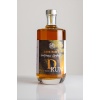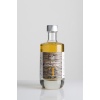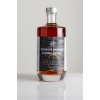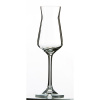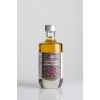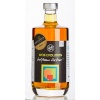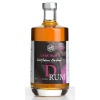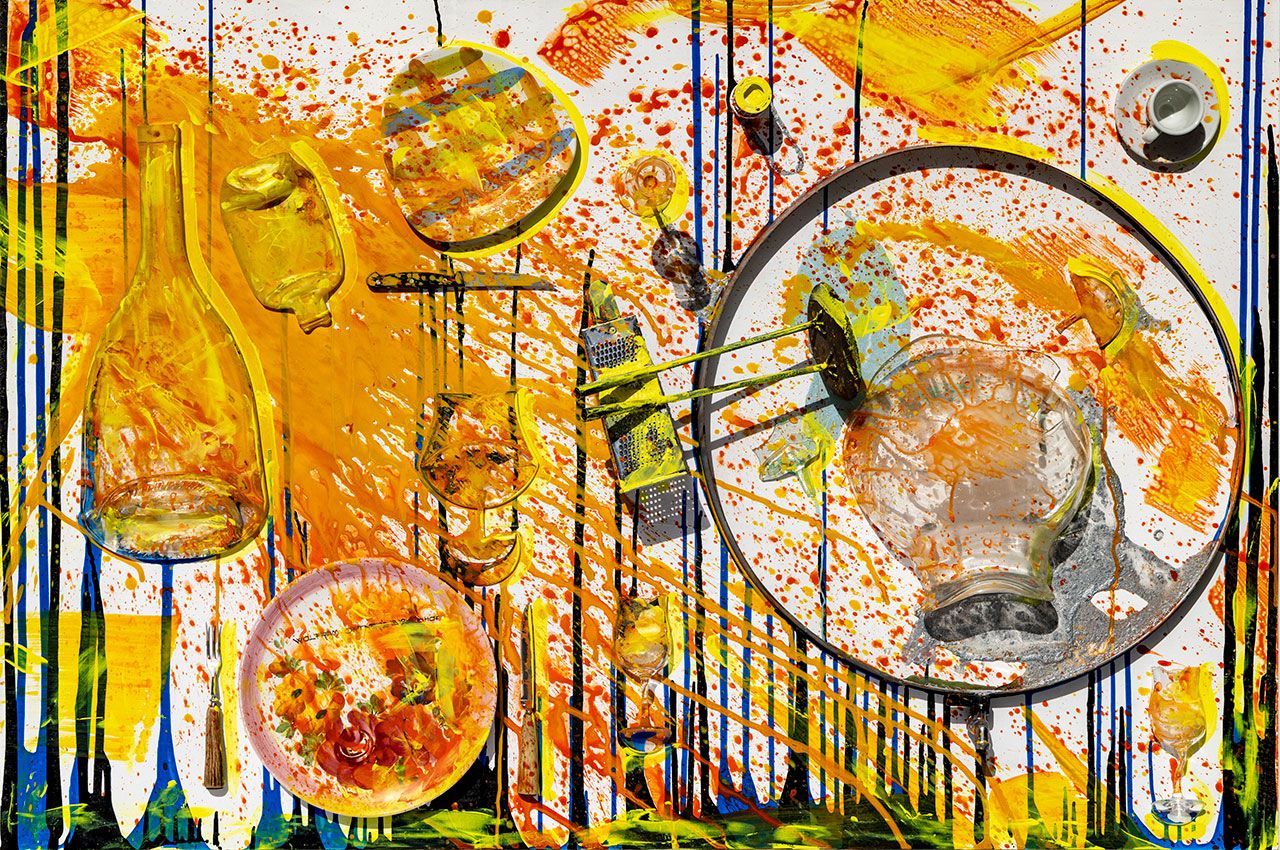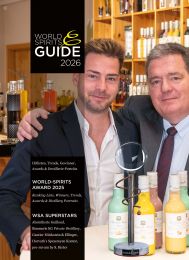
Table of Contens
- Outline
- Introduction: An homage and a rethink
- Why a Campari alternative? Philosophy and positioning
- Production: distillation, effort, and expense
- How to drink WOB Red:Bi the Campari-Alternative
- WOB-Shots: LAV and SIN — two little bottles, two strong concepts
- How to use the WOB-Shots
- Tasting notes: detailed sensory descriptions
- Serving and pairing ideas
- Commercial notes: availability and ordering
- Why WOB Red:Bi the Campari-Alternative matters
- Conclusion
- Frequently Asked Questions (FAQ)
- Final remarks
WOB Red:Bi the Campari-Alternative — Handcrafted Red Aperitif and WOB-Shots Deep Dive
In a new presentation, Inside World-Spirits TV host Wolfram Ortner introduces WOB Red:Bi the Campari-Alternative alongside WOB's compact flavor-focused WOB-Shots. This article unpacks the story, production approach, tasting notes, and best ways to enjoy both Red:Bi and the two WOB-Shots—LAV and SIN—so readers can understand why WOB Red:Bi the Campari-Alternative claims a distinct place among bitters, aperitifs, and small-format crafted spirits.

Introduction: An homage and a rethink
Wolfram Ortner frames WOB Red:Bi the Campari-Alternative as both an homage and a reinvention. He acknowledges the lineage—Campari is a reference point for red, bitter aperitifs—but insists that WOB's approach is that of a craft distillery rather than an industrial producer. WOB Red:Bi the Campari-Alternative aims to capture the tonic, bitter, floral, and herbal character familiar to aperitif lovers, while being made according to the smaller-scale, distillation-first methods of a manufactory.
WOB Red:Bi the Campari-Alternative is presented not as a clone but as a reinterpretation. In his presentation, Wolfram stresses that the product is intentionally different in method and harmonics; it is distilled and then rebalanced rather than built primarily from added oils and artificial aromas. That distinction is foundational to understanding the final sensory profile of WOB Red:Bi the Campari-Alternative.
Why a Campari alternative? Philosophy and positioning
Large industrial brands historically rely on maceration of botanicals, aroma concentrates, and flavor oils to create stable, intense red aperitifs. WOB Red:Bi the Campari-Alternative takes the opposite route: it is labor-intensive, born from a distillery's craft mindset. Wolfram explains that the drive was to make something that speaks to the Campari language—bitterness, citrus, and red-hued intensity—while being unmistakably hand-crafted.
WOB Red:Bi the Campari-Alternative is therefore positioned for people who want the aperitif experience but prefer a distilled, man-of-the-craft approach: it’s for bartenders and home enthusiasts who value transparency in production and a subtler, evolving flavor profile instead of industrial continuity. The product celebrates complexity and harmony, trading mass-produced punch for distilled nuance.

Production: distillation, effort, and expense
Wolfram openly admits that making WOB Red:Bi the Campari-Alternative was exceptionally demanding. He describes it as the most elaborate recipe he had ever attempted in his facility. Distillation is the key differentiator: unlike macerative approaches, distillation removes many oils and some bitter elements; the craft is to reconstruct balance after distillation while preserving aromatic clarity.
That technical choice brings costs—both time and raw-material expense. Wolfram explains plainly that the product’s production costs are high; if the product were priced purely for production cost recovery, it would be prohibitively expensive. The choice to maintain a fair retail price reflects a commitment to accessibility while absorbing some of the production premium internally.
WOB Red:Bi the Campari-Alternative’s distillation-based method also brings a different aromatic architecture. Where oils in industrial products offer immediate, bold aromas and mouthcoating textures, WOB Red:Bi the Campari-Alternative offers a fresher, more volatile aromatic profile that evolves in the glass. This requires readjusting how the product is served and experienced: it rewards gentle presentation and time to open up.
How to drink WOB Red:Bi the Campari-Alternative
Wolfram outlines simple yet thoughtful serving options for WOB Red:Bi the Campari-Alternative. He recommends experiencing the spirit in multiple ways to understand its character:
- Neat or in a tasting glass (a small measure) to inspect aroma and bitterness directly.
- As a long drink with soda: this is Wolfram's personal favorite.
- Over a single large ice cube to gently dilute and time-release the flavor.
Key rules for serving WOB Red:Bi the Campari-Alternative:
- Use plain, neutral soda water. Avoid mineral waters with strong mineral or sodium character that would compete with the delicate harmonics.
- Serve the soda very cold. Wolfram emphasizes that the soda should be “very very cold” to preserve effervescence and deliver the right balance of acidity and freshness.
- Recognize that the product is rosy in color, which is part of the aesthetic and emotional appeal in an aperitif glass.

Wolfram also discusses the sensory consequences of distillation: because WOB Red:Bi the Campari-Alternative is distilled, some of the bitter compounds don’t carry over in the same way as maceration. That meant he had to reintroduce bitter elements in a measured, post-distillation fashion to achieve the desired bitterness. The result is a balanced bitterness set within a broader, layered aromatic field that he describes as a “total harmony.”
Why dilute? Why soda?
The distillation-dependent aromatics are typically more volatile and might seem “thin” at high proof if tasted neat. Dilution with ice or cold soda opens the aroma and integrates bitterness and acidity. Soda softens the spirit while preserving brightness, which is essential for WOB Red:Bi the Campari-Alternative. Wolfram prefers soda because it allows the drink to lengthen and evolve in the glass—an important part of the experience.
WOB-Shots: LAV and SIN — two little bottles, two strong concepts
Alongside WOB Red:Bi the Campari-Alternative, Wolfram introduces two compact products called WOB-Shots. These are concentrated flavor shots intended as small, intensely flavored indulgences. The two variants—LAV and SIN—are conceived with contrasting inspirations: one Mediterranean and fresh, the other oriental and warm.

LAV — Mediterranean freshness
LAV (short for Lavendel-inspired) is described as bright and fresh, built around citrus notes, peppermint, and a whisper of lavender. The resulting profile is lively, herbal, and aromatic. The lavender is subtle and never dominates; it’s a thread that ties together citrus and mint into a cohesive Mediterranean bouquet.
Wolfram emphasizes that LAV's appeal also channels an emotion: "love." He suggests that while lavender is present, the product's charm comes from a delicate, appealing balance—something meant to be sipped and enjoyed rather than bombed like a mass-market shooter.
SIN — oriental intensity
SIN is the darker sibling: oriental-inspired, warm, and aromatic. Tonka bean, anise, and clove are the prominent voices. These ingredients give SIN a sensual, spicy, and slightly sweet warmth that Wolfram associates with passion and seduction. He frames SIN as the "sinful" choice, with a personality leaning toward deeper spiced notes.
The positioning is playfully gendered in his presentation: LAV is often marketed toward women, with its floral-fresh approach; SIN is pitched toward men because of its heavier, warmer spice profile. This isn’t a prescriptive rule, but rather an observation of how some flavor preferences map in the marketplace.

How to use the WOB-Shots
WOB-Shots are intentionally versatile. They can be consumed as concentrated “small shots” or used as flavor enhancers in longer drinks. Wolfram suggests two primary serving approaches:
- Add a few drops to a glass of soda or tonic for a flavor lift and aroma-focused spritz.
- Serve a tiny measure over ice to let a slowly melting cube dilute and extend the drinking time—this softens intensity and facilitates prolonged enjoyment.
Their concentrated design means only a few drops are needed to impart a clear flavor identity. That makes them perfect for experimenting with layering in cocktails, adding finishing accents, or creating signature long drinks with minimal effort.

Tasting notes: detailed sensory descriptions
WOB Red:Bi the Campari-Alternative
- Aroma: Bright citrus top notes, aromatic herbs, subtle floral lift, and a restrained bitterness. The distillation gives high-toned aromatics that open when slightly diluted.
- Palate: Initially fresh and citrusy, unfolding into bitter herbaceousness and a rounded mouthfeel. Because of careful post-distillation bittering, the bitterness is balanced and integrated rather than aggressive.
- Finish: Clean, slightly drying, with a lingering herbal echo and pleasant red-aperitif warmth.
LAV (WOB-Shot)
- Aroma: Zesty citrus, minty coolness, light floral lavender whisper.
- Palate: Crisp, aromatic, and refreshing. LAV is bright and ideal for daytime spritz-style long drinks.
- Finish: Quick and clean with a cooling sensation from the mint and a soft floral backnote.
SIN (WOB-Shot)
- Aroma: Warm tonka, anise licorice, and clove spice, with a rich, enveloping scent.
- Palate: Full-bodied spice presence, sweet-bitter interplay, sensual depth suited to evening sipping or dessert pairings.
- Finish: Lingering warmth and spice, with an accessible sweetness from tonka bean.
Serving and pairing ideas
WOB Red:Bi the Campari-Alternative
- Classic spritz: 1 part Red:Bi, 2–3 parts very cold soda, garnish with orange twist. Use a large wine glass and very cold soda water to keep the drink refreshing and aromatic.
- Over ice: One large cube, 30–40 ml Red:Bi, a long stir and time to open. The slow melt extends the enjoyment.
- Cocktails: Substitute in any Campari-based recipe to explore a subtler, distillation-driven bitterness (e.g., Negroni experiments with lower bitterness ratio).
LAV
- Daytime spritz variant: Add a few drops to soda or sparkling wine for a floral-mint lift.
- Mixology accent: A few drops in a gin fizz or citrus-forward cocktail can add aroma and complexity.
SIN
- Digestif mood: A few drops on a small ice cube after a meal for warmth and spice.
- Dessert pairing: Works well with chocolate, almond pastries, and spiced desserts thanks to tonka and clove.

Commercial notes: availability and ordering
Wolfram mentions that consumers can order WOB Red:Bi the Campari-Alternative and the WOB-Shots directly from the WOB shop. He highlights two shopping options: the WOB online shop and a local shop in Bad Kleinkirchheim (the Brennerei's storefront). The bottles are positioned as specialty items, so availability can be limited compared to mass-market aperitifs.
Because production is artisanal and resource-intensive, supply may be more constrained and seasonal. Interested buyers should expect small-batch offerings and occasional sell-outs. Wolfram suggests ordering promptly if a particular release or shot variant is of interest.
Why WOB Red:Bi the Campari-Alternative matters
WOB Red:Bi the Campari-Alternative matters because it offers a different answer to the same question: how do you make a red, bitter aperitif that sits well in modern cocktails and spritzes? The answer here is craft distillation followed by careful rebalancing—an approach that favors aromatic precision and harmonic integration over industrial intensity.
Wolfram’s candid description of the effort involved underscores the values behind the brand: careful ingredient selection, technical distillation choices, and a willingness to absorb production cost implications to keep the product accessible. For bartenders and enthusiasts, WOB Red:Bi the Campari-Alternative is an invitation to taste a red aperitif that rewards slow appreciation and experimentation.
Conclusion
WOB Red:Bi the Campari-Alternative and the accompanying WOB-Shots (LAV and SIN) present a focused range of handcrafted flavor experiences. WOB Red:Bi the Campari-Alternative reimagines a red aperitif through distillation and harmony, while the WOB-Shots explore concentrated flavor accents in compact formats. Together they reflect Wolfram Ortner’s craft ethos: high effort, careful balancing, and a clear intention to make drinks that invite curiosity and repeated tasting.
For people who love to explore aperitifs beyond industrial templates, WOB Red:Bi the Campari-Alternative offers an accessible yet sophisticated path—best enjoyed slowly, over soda, or as a catalyst for creative cocktailing. LAV and SIN provide quick avenues to broaden a bar's aroma palette with only a few drops.

Final remarks
WOB Red:Bi the Campari-Alternative represents a thoughtful, distilled approach to red aperitifs: careful, costly, and rewarding to the curious palate. Paired with the compact intensity of WOB-Shots like LAV and SIN, it expands what bartenders and home enthusiasts can do with aperitif moments. Whether used to replace a familiar ingredient or to add a new aroma dimension, WOB Red:Bi the Campari-Alternative invites experimentation and slow appreciation.
For those who value craft, transparency, and flavor complexity, these products are worth seeking out—especially when served cold, slowly, and with the intention to savor.
Top Seller
FAQ - Häufig gestellte Fragen
WOB Red:Bi the Campari-Alternative and the WOB-Shots are the products of Wolfram Ortner’s Brennerei and the Inside World-Spirits TV project. The work reflects the distillery’s commitment to artisanal craft and creative reinterpretation of classic spirit categories.
Ingredients like tonka bean are aromatic and can have legal/regulatory considerations in some jurisdictions. Consumers with allergy concerns or dietary restrictions should consult product labels and the producer for detailed allergen and ingredient information prior to purchasing.
Store them upright in a cool, dark place away from direct sunlight. Because the products are aromatic distillates, they are stable, but long-term storage in heat or sunlight can alter delicate top notes over time.
Yes, it can be used as an alternative in classic Campari cocktails. The taste profile will differ—expect a more distilled aromatic lift and a softer bitterness—but that can be fascinating to explore. Adjust sugar or vermouth ratios if you want to match the intensity usually produced by Campari.
As artisanal, small-batch products, availability can be limited. WOB Red:Bi the Campari-Alternative and WOB-Shots are sold through the WOB online shop and the local Brennerei shop in Bad Kleinkirchheim. They may occasionally sell out between production runs.
These shots are potent; usually only a few drops are necessary to flavor a glass. For a long drink, start with 2–5 drops, then adjust to taste. Overdosing can overwhelm the base beverage because the formulations are concentrated.
WOB-Shots are concentrated flavor shots designed for small servings or as cocktail accents. LAV is Mediterranean: citrus, mint, and subtle lavender. SIN is oriental: tonka bean, anise, and clove, leaning toward warm spice and sensuality.
Recommended servings include neat tastings in a small glass, long drinks with very cold neutral soda, and drinks over a single large ice cube. Cold soda should be neutral in flavor (not strongly mineralized) to avoid competing with the spirit’s delicate harmonics.
While both belong to the red aperitif tradition, the main difference is production method and resulting aromatic structure. Campari and similar industrial products often rely on maceration and added aromas, which produce bold, oil-rich profiles. WOB Red:Bi the Campari-Alternative is distilled, which emphasizes volatile aromatic clarity; bitter elements are reintroduced in a measured way to achieve balance.
WOB Red:Bi the Campari-Alternative is a handcrafted red aperitif inspired by the Campari flavor family. It is produced using distillation as the central production technique rather than predominantly oil-based maceration. The result is a different aromatic profile that emphasizes harmony, freshness, and an integrated bitterness.


